Last updated on September 21st, 2023 at 12:35 pm
Solitary bees are vital to the ecosystem and are known to pollinate with incredible efficiency. Crop production benefits from the excellent cross-pollination abilities of solitary bees such as the red mason bee, certain types of plants are specialized to only be pollinated by certain bee species.
Our gardens are often filled with honeybees and bumblebees, but solitary bees are the ones in the most danger, and in the greatest need of our help.
So when it comes to attracting these solitary bees, what are the best plants and wildflowers to consider?
Find out more about the lifecycle of a solitary bee.
Environment and Coevolution between solitary bees and plants
Before diving into your local nursery and picking up a range of plants, it’s important to understand what sort of plant for bees you would be bringing to the growing area and how to create a bee-friendly garden. As mentioned, plants can be particular about their pollinators.
Consider the bucket orchid, for instance. Endemic to South and Central America, these flowers are almost exclusively pollinated by male orchid bees drawn in by the strong scent produced by the plant.
The bees fall into the flower bucket and must pass through a narrow opening to escape, and pollen packets are stuck to the bee as he squeezes his way through.
This coevolution between plants and bees isn’t always just for plant reproduction; many bee species rely on specific plants in order to meet their nutritional needs. Choosing a variety of plants invites different kinds of bees to your garden, so the more variety, the better!

Native Plants for Solitary Bees
The best bet for attracting a wide range of solitary bees is to introduce native plants to the garden.
They are guaranteed to be the best source of food for native bees and are often underappreciated in gardens.
As well, consider the other flowering ornamental plants you may find at the nursery: where do they originate from?
Are the solitary bees here able to pollinate these flowers or collect food from them? Consider the earlier example of the bucket orchid.
They are beautiful-looking plants! But they attract orchid bees, which most certainly do not live in Europe or North America. Native plants not only provide specific nutrition for some bees, but they provide a wide variety of nutrients.
For cactus bees of the American South, their primary food source is—you guessed it—cactus.
The pollen provided by the cacti offers everything these bees need to survive, and in return, they help more of the prickly plants grow.
Some native plants have coevolved with the bees in the environment, and they will depend on one another’s survival.
Without one, the other cannot exist, so be sure to find bee-supporting plant species to help boost the population of their pollinators.
Pollen and Nectar-Heavy Plants
For the allergy sufferer, pollen can be a terrible nuisance. But plants pollinated by insects aren’t to blame for the misery; wind-pollinated plants rely on sheer luck to get the pollen where it needs to be, and as such will create enormous amounts of pollen to increase those chances.
The flowering bushes in the yard are much less likely to cause itchy eyes and sniffles, considering they rely on insects to move the pollen, and no wind.
In the garden, native plants always create lots of pollen and nectar for bees, but so do fruit trees and bushes such as blueberries, most flowering shrubs, and perennials, especially those in the Asteraceae and Brassicaceae families.
These last two also tend to be easily pollinated by a variety of bee species.
Learn about which fruits bees pollinate.
Plants to Avoid
Invasive plants and species of flowers love to take over and fill out areas with great speed, choking out native plants along the way.
The ability for these intruders to grow so quickly and wildly happens for a variety of reasons, but one of them is their ability to produce large amounts of pollen and nectar for bees, and in turn, produce thousands of seeds.
Although providing lots of food for bees is a good thing under normal circumstances, the cons outweigh the pros when it comes to invasive species, especially when they block out plants that offer valuable nutrition for certain bee species.
Certain plants have been bred to increase their beauty and splendor.
Visually pleasing, but not always beneficial for bees! Some varieties of ornamental cherry trees are bred to have more petals per flower, resulting in delightfully fluffy blooms. The variety ‘Kanzan’ can have as many as 28 petals on a single blossom.
The downside is that navigating into the folds of all these petals to reach the pollen and nectar at the center is no easy task for a bee, and the effort isn’t always worth the reward if the plant doesn’t provide a sufficient amount of food. If they are unsatisfied, the bees will simply move on to find another plant.
That said, there’s nothing wrong with including these sorts of plants in your garden so long as you have lots of bee-friendly plants to make up for it.
Not Just Flowers
Many types of grass and trees are wind-pollinated, but that doesn’t mean they don’t benefit the garden. Pithy stems that have died back in the winter can be the perfect nesting home for a solitary bee, and grasses can offer protection from the elements for ground-nesters.
Bee-friendly gardens should be treated as a miniature ecosystem, where trees can provide shade and bits of old wood can be a carpenter bee’s nest. Learn more about the carpenter bees’ lifecycle and lifespan.
Allowing your garden to be a little messy and having a nearby compost pile or stack of branches can be a big boost to different bee species.
As well, refraining from raking up leaves and leaving some debris in the garden might not look the prettiest, but you offer building materials for a whole host of beneficial insects.
If you dread the annual fall cleanup of the garden this could be great news; minimal work and you’re helping the bees!
But for those who prefer a cleaner-looking area, consider raking and tidying up the mess and then finding bushes or trees to hide piles of debris behind.
You’ll disguise the clutter but still be benefitting the critters by providing a nesting area. Remember to let the weeds grow for a little while in the early spring, as many of them will be the first source of food for hungry bees emerging from cocoons or hibernation.
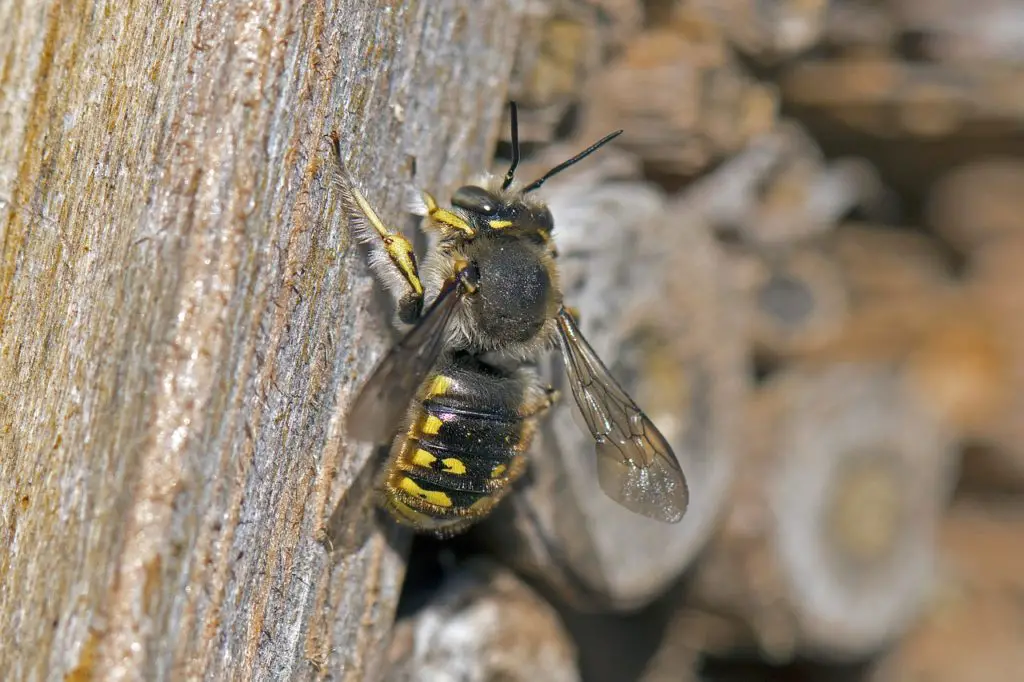
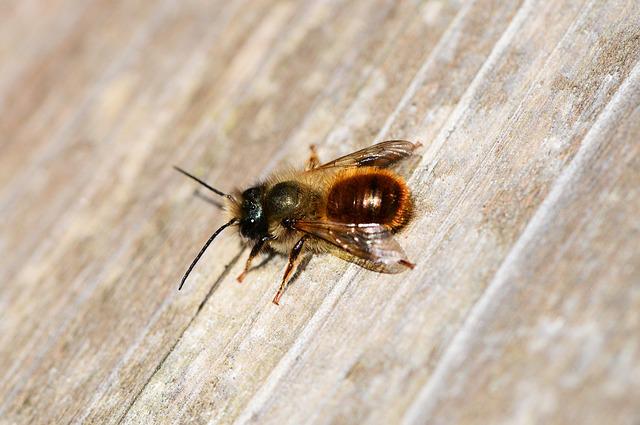
Plants Provide Shelter for Solitary Bees
One of the biggest challenges that solitary bee species face is habitat destruction.
Around 70% of all bee species across the world are ground-nesters, and as infrastructure and agriculture expand solitary bees have been experiencing difficulty finding suitable nest sites where they won’t be trampled, run over by machinery, or dug up from the earth.
When creating a garden, having paths and areas of undisturbed ground gives solitary bees space to burrow and make their homes. Consider building islands and large garden beds that won’t be trampled on, and limit walking on those spaces as much as possible.
A great option is raised garden beds; you’ll be able to reach in to plant or remove material without trampling any nesting guests.
You can also create bee hotels/ bee houses to benefit solitary bees in your garden.
Given that many bee species rely on plants not only for food but also for their homes, it might be unnerving to see perfectly cut half-moon shapes on the foliage of some of your plants.
You might instinctively blame caterpillars, but take a closer look: are the shapes almost perfect semicircles on the edges of the leaves? If so, you’re more likely dealing with leafcutter bees.
These tiny bees are very docile and fantastic pollinators. Unlike caterpillars, they don’t eat the leaves but instead, use them to build their nests. Some holes in your leaves may look ugly but you’ll certainly have some happy bees.
Pollination Methods
As mentioned previously, some plants rely on certain bees for pollination. Some bees engage in “buzz pollination”, where they grab hold of a flower and vibrate to dislodge pollen.
Plants that need to be pollinated in this method include tomatoes, potatoes, eggplants, and blueberries. Just under 10% of all bee species are buzz pollinators.
The vast majority of solitary bees also lack pollen baskets, which honey bees use to carry food back to the hive. Instead, they have scopa hairs, which are finely branched hairs that often cover their legs or bellies and latch on to pollen particles.
When the bee leaves a flower she’ll be covered in a thick coating of pollen, and she’ll deposit lots of the particles on the next flower, like burrs stuck to a hiker’s trousers.
Some bees build up electrostatic charges with their wings during flight, which causes their body hair to be positively charged.
Pollen particles are negatively charged and attracted to the hair, and loosely attached particles will lift right off the stamens of the flower and stick to the bees. These particles have been observed to have jumped as many as a few millimetres away.
How Flowers Attract Solitary Bees
Did you know that bees have favourite colours? Take bumblebees, for instance. These fuzzy friends love blues and purples, and you can often see them covering lilac and lavender bushes.
Bees don’t see colours the same way we do, however. They lack the cones that allow them to see red, so it appears black to them. Despite their inability to see red, they have an advantage that we lack; they are able to see ultraviolet light.
The seemingly uninteresting flowers that often don lawns and meadows may not look like much to the human eye, but a simple white bloom to a bee may have entirely different stripes and hues to draw them in.
Certain flowers that bloom at night appear vibrant white in ultraviolet, allowing nocturnal pollinators to easily spot them. The morphology of flowers also attracts certain species. Flowers like those on tomato plants need to be buzz pollinated, for example.
When selecting plants that will attract bees, keep an eye out for yellow and blue flowers as they are the most likely to catch a bee’s attention. A garden of entirely red flowers will certainly still bring in bees, but they may have a harder time locating the blooms.
Revive a Bee’s recommended Wildflower Mix for bees and pollinators and an alternative for shady gardens with less sunlight.
Another method of attraction is much the same as our attraction towards certain flowers: scent. Blooms with strong, floral smells can indicate a nutritious source of nectar or lots of pollen.
Keep that in mind next time you’re at the nursery, and give the flowers a good whiff in search of strong, pleasant-smelling blooms. Both you and the bees will enjoy the scent, just be wary of sticking your nose in a flower occupied by a bee!
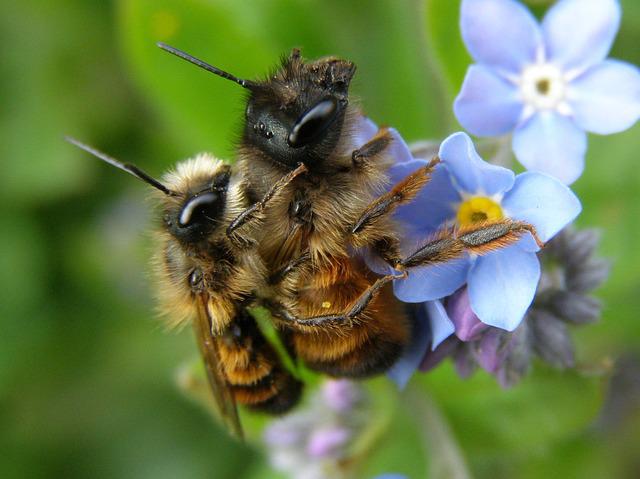
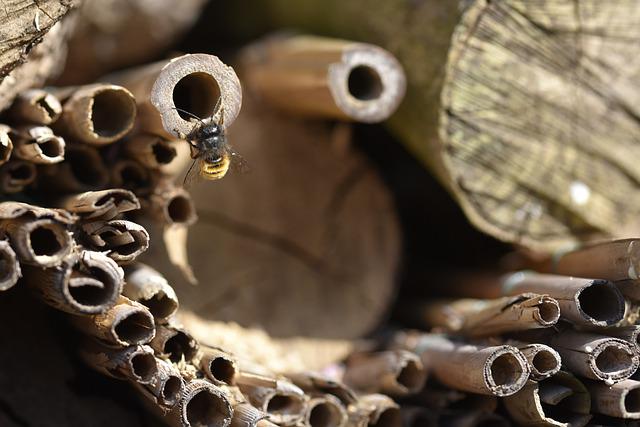
Best Flowers to Plant for Solitary Bees
Understanding that bee-friendly gardens require not just blooms but habitat potential, and introducing native plant seeds is a great start to building a growing area that will benefit the native bee populations.
Since different areas have different bees, a specific list of plants isn’t always the best option. That being said, your best bet is fruit trees and plants, perennials, and shrubs with lots of vibrant colours like purple and yellow blooms with flat surfaces.
Flowers with flat surfaces are easy for bees to land on such as sunflowers or coneflower, woody herbs like rosemary and lavender, and any non-invasive plant that produces lots of flowers to maximize pollen and nectar.
Arranging gardens so there are plants in bloom all year long is another way to keep the bees fed and happy. Living in hot, dry climates can invite cactus bees, but not everyone is interested in a garden of cacti and succulents.
Drought tolerant plants like California Lilac (Ceanothus thyrsiflorus ‘Victoria’) have beautiful blue flowers and are often full of bees during high summer. Finding attractive plants to fit your garden and benefit bees can be accomplished in any climate.
Is There Competition Over Flowers?
Once a flower has been sufficiently pollinated, it stops the production of pollen and nectar, and the plant focuses its energy on producing seeds to carry on its lineage.
When a bee cannot find an unoccupied flower, she has to travel further away in search of sustenance. Most solitary bees coexist well, but when a garden is overtaken by tens of thousands of honey bees from a nearby hive, these native bee species can have a difficult time looking for food.
Bees won’t fight over a flower but this form of competition, especially over a long period of time, can have detrimental effects on solitary bees. Lack of forage, particularly on flowers that may provide much-needed nutrition, could mean death from hunger or exhaustion. Native bees and honey bees can coexist under normal circumstances, but for a single mason bee looking for a bloom among thousands of honey bees, it can be a terrible challenge.
Crop Production
It may be surprising to learn that the humble mason bee is a powerhouse of a pollinator. These solitary bees are very docile and self-sufficient; no hives or fancy equipment is required in order to keep them in your garden.
Honey bees are meticulous pollinators, starting with the flowers on one branch and moving along one by one until she has visited every flower along the branch.
Mason bees are chaotic, and that makes them better at pollinating. Their method of flopping from flower to flower, not caring what branch, or even what plant she started on sounds messy, but it allows them to cross-pollinate incredibly well.
The mason bee also has those aforementioned scopa hairs, so she leaves more pollen on every flower she visits and increases the chances of fertilization. A few hundred thousand honey bees in an orchard can be replaced by a couple of hundred mason bees.
The downside is that, unlike their honey-producing cousins, mason bees can’t be moved from one growing operation to the next within the same year, and their lifecycles are often only six weeks long.
Check out our article on the best flowers and plants for Mason bees.
Garden Planning for Solitary Bees
With a good combination of native plants, flowering shrubs and perennials, food crops, grasses, and anything else you feel may benefit your garden, you are well on your way to having a habitat for solitary bees.
Experiment with introducing different plants, observe what sort of bees visit, and make sure you have room for their habitats! Another important practice is ensuring you have plants to provide blooms all year long.
Bees that forage in the fall won’t benefit from a garden that only blooms in the spring, so make sure you have a variety of plants that will flower throughout the seasons.
It will also create a beautiful appearance to have a garden that is constantly changing. Winter is the dormant season for bees, and solitary species will be nestled up in nests or cocoons, waiting for the warmth of spring to break them out of hibernation.
In hot climates with very mild winters, some species may be active for longer into the winter or earlier in the spring. Make sure to select for plants that will bloom during the cold season in these climates.
Snowdrops are a great example of early spring plants for pollinators, as well as primulas, crocuses, and hellebores.
For plants that bloom late in the year, autumn clematis, chrysanthemums, New England asters, hibiscus, and Russian Sage will flower into the cooler months.
These will provide much needed pollen and nectar to solitary bees before they go into hibernation. Be sure to research how these sorts of plants will perform in your area, however.
Goldenrod for instance, is native to North America and provides late-season blooms for the bees, but after being introduced to Europe it has become invasive in some areas.
Autumn clematis can also spread like a weed under the right conditions, so be sure to keep it in check and prune back hard after it flowers.
Annuals are also a great choice as they bloom for a long period of time, and can be switched out every year for a constantly ever-changing garden.
Marigolds, zinnias, petunias, and salvia are all great choices, with marigolds being infamous for keeping away mosquitos. Lantana, pansies, and alyssum are also popular annuals, and nothing beats the giant blooms of sunflowers.
Most vegetables provide flowers continuously throughout the growing season, especially indeterminate tomato plants and squash.
Infographics that claim “Plant these to save the bees!” are fantastic resources for bee-friendly plants, but they are not necessarily specific to a region or hardiness zone, nor do they specify which bees they will benefit.
When researching plants, always be sure to include your area so as not to unintentionally invite invasive plants.
It will also be beneficial to research what species of solitary bees live in your environment, as many books and websites will also note their favourite flowers to visit, which can be a clue as to what you should plant.
The ashy mining bee, for example, pollinates fruit trees, weeds, heather, Rosaceae plants, and so on. They’re generalists and don’t require highly specific plants.
Looking up images of this bee often shows pictures of it on flat yellow flowers; a good indicator of what you should keep an eye out for at the nursery.
For the gardener that loves to putter about, planting a wide variety of perennials, annuals, vegetables, and fruit trees can make for a beautiful space that benefits both you and the plants.
For those that want to help solitary bees but prefer a low-maintenance garden, planting bunches of perennials, especially those with yellow, purple, and blue flowers will be a major boost to the bees.
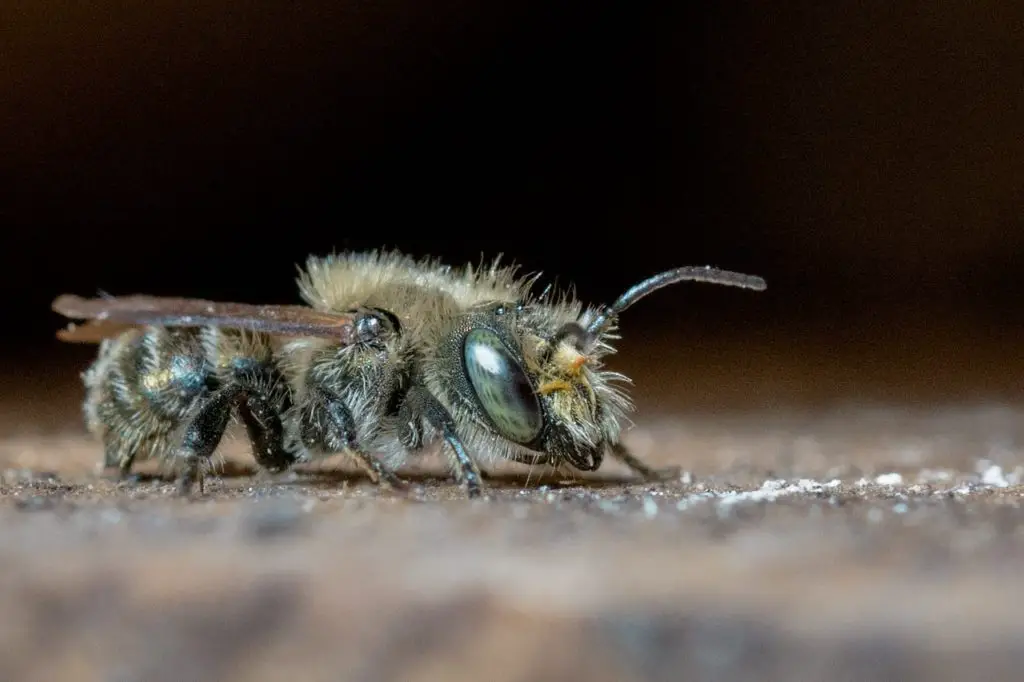
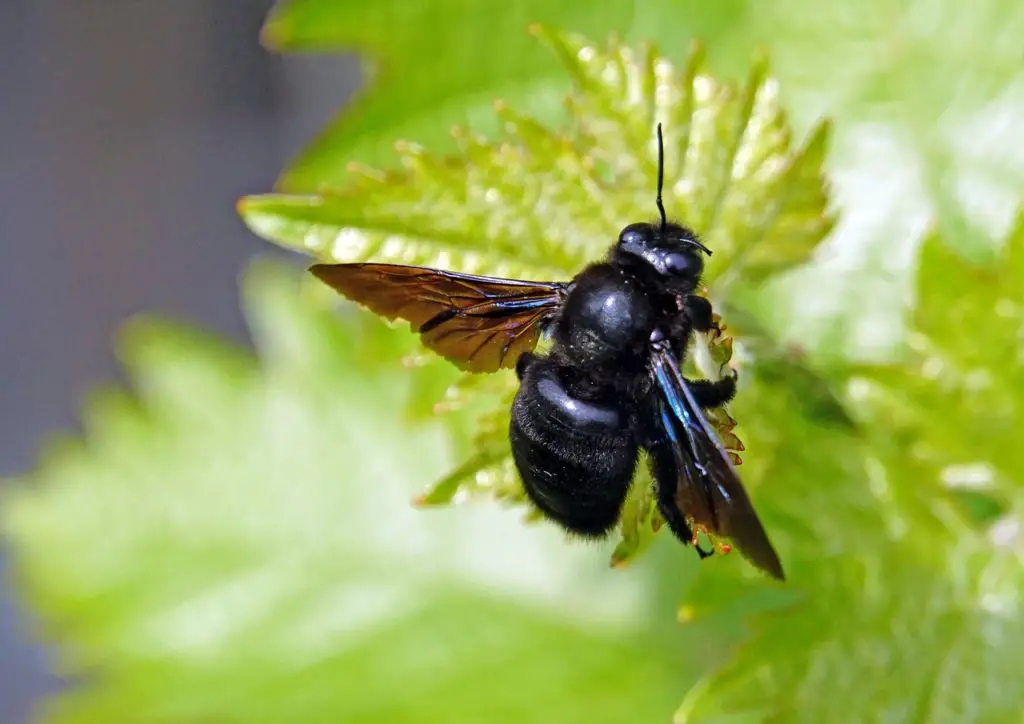
On a budget? Not an issue
As a final note, plants can be expensive. You might be able to pick up a small perennial without spending too much, but when looking for a large variety the costs can rack up quickly.
Friends with a green thumb may be willing to split some of their perennials, or you might have some knowledge of propagation, but not everyone is as lucky. Consider the native plants mentioned before.
If you can dig up some plants from a nearby meadow or take some seeds from the plants and scatter them, you can bring some of that nature home.
Seed packets can be inexpensive but until they’ve grown and established it can take some time to get your garden going.
Don’t be discouraged if you can only add a few plants at a time, no matter how slow your progress, the bees will be happy to have food and a home, and they will have you to thank for it.



